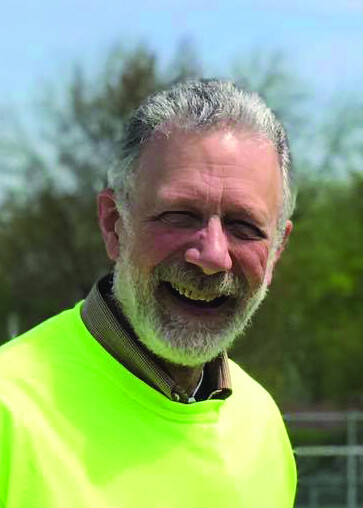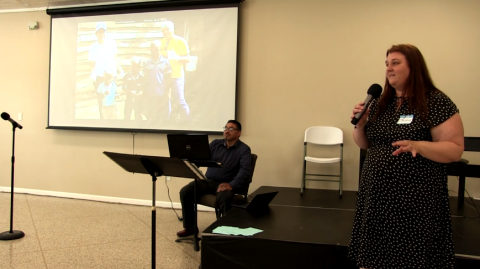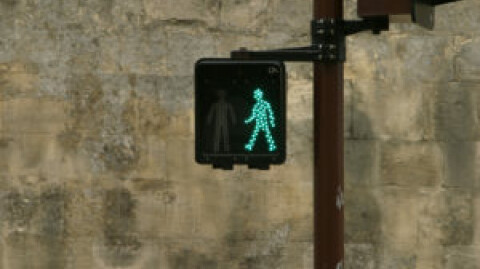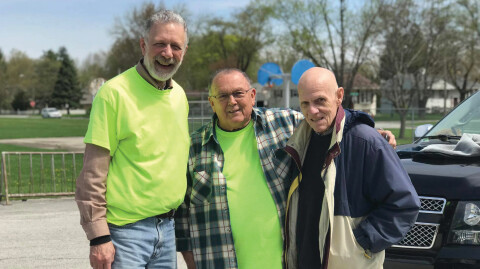Ten years ago, as part of a Fall spiritual growth initiative, the congregation at College First read Rick Rusaw’s The Externally Focused Church. In the course of reading, reflecting and praying, the leadership team wondered what it would look like to serve our local community: if people could go to faraway places—the congregation had previously invested in mission teams to Haiti, Brazil and the American Southwest—could the congregation invest in its local community, in “the shadow of its steeple.” Simultaneously, one of the elders and member of the planning team (Bob Fry) brought back from a visit to his mother a newspaper article describing an outreach to the local community. Churches in the Canton, Ohio community organized themselves in teams of ten persons to serve their neighbors, raking leaves, cleaning gutters, picking up debris and other small (or not so small!) projects to benefit the homeowner. Judge Fry served on the municipal bench and sought input—and subsequently projects—from the city department responsible for answering complaints from neighbors about unkempt properties. During that first year approximately 125 members of the congregation worked on nine properties as a mission trip to the local community.


From that inauspicious beginning the Backyard Mission Trip (BMT) has developed into an initiative involving volunteers from 30 congregations and civic groups serving more than 250 projects for homeowners across the city and county. Leadership is provided by a steering committee that represents and coordinates the key areas of the activity—promotion and publicity, volunteer recruitment, identifying and vetting projects, providing food and hospitality for the day of the event and connecting work teams with suitable projects. The committee meets sporadically through the fall and winter and eventually weekly as the day approaches. The planning is held loosely as the committee has had to be extremely flexible to adjust to needs of the community. While the process cannot be franchised there are some experiences that may be adaptable to other settings. With broad strokes I’ll share some of the experiences of the Findlay group.
Volunteer recruitment happens best through the local church and is supported across the community with billboard and newspaper advertising beginning approximately 10 weeks prior to the event. Each congregation is asked to identify a church liaison who can identify team leaders and register volunteers. All are welcome, from skilled tradespersons who may need to tackle a complicated electrical or plumbing project to persons (including children) adept at handling a rake. Teams consist of five to ten people and choose one or more projects from a spreadsheet. We ask teams to care for homeowners in their own congregation as well as the unchurched who may live close to the church building in order to build meaningful relationships. Volunteers are encouraged to pray together with the homeowner at the beginning of the project and one of the volunteers may choose to spend an extended time visiting with the homeowner, again to build a caring relationship that will hopefully last far beyond the day of the BMT. Some congregations invite all volunteers and home owners back to the church building a week or two after the event for a meal and opportunity for debriefing.
While liability insurance has been underwritten by College First as an extension of its ministry, volunteers sign a waiver absolving the church or anyone involved in BMT of any liability. Any injuries or medical attention are processed through the volunteer’s personal health care policy.
Homeowners complete an application made available online and at several high traffic locations throughout the community. Criteria are fairly relaxed, however no project is undertaken (such as roof repair or mold remediation) that would put a volunteer at risk. Projects are meant to provide care and support for those who may have physical or financial limitations that preclude their ability to complete the project. The whole BMT experience is not meant to exclude work (and livelihood) from tradespersons, but to lend a helping hand to those with some need. Our planning committee has often talked of giving preferential treatment to projects that create “warmer, safer, drier” conditions for the homeowner, but we recognize that many projects (cleaning up an elderly widow’s lawn) would not fit that criteria.
When the project is submitted on a hard-copy application, a planning team member enters the data on the spreadsheet. In many cases someone from the Project Management team or team leader will “scope out” the project, i.e., visit with the homeowner to introduce him/herself, and estimate the skill level, the extent of work, time and materials needed to complete the project. By providing early review of the project and posting information on the master project page, the team leaders have a better opportunity of matching an appropriate project with the skills of their team.
Project applications are submitted on a google doc that populates a single comprehensive spreadsheet with all necessary information about the project. Team leaders are able to view that spreadsheet to choose projects from their congregation or neighborhood that match their team’s skills. To maintain confidentiality, only team leaders are given access to the spreadsheet. At the end of the event each team leader completes and returns a “project status sheet” so that the planning committee is able to track which projects are unfinished.
Projects that exceed teams’ skillset on the day are referred to the local chapter of Habitat for Humanity. Habitat has access to a network of skilled volunteers often able to complete more difficult projects. Projects not completed on the day of the event (representing about 10% of the registered projects) are either referred to Habitat or put in a pool for congregations to pick up through the summer. In either case homeowners are alerted by phone call regarding the disposition of their project.
The mission trip is carried out with limited financial support from the planning team. Breakfast sandwiches are purchased but volunteers donate yogurt, granola bars, fruit and coffee for participants to enjoy on the morning of the event. Registration and breakfast begin at 7:00am leading into announcements, worship, prayer and sending by 8:00am. Teams are responsible for their own lunch although several downtown churches have made a light lunch available for teams who may want to drop in. Others order pizza to share with the homeowner. In some cases homeowners have provided lunch for the entire team.
Homeowners are encouraged to purchase any supplies needed by the team. When financial resources are limited some teams have chipped in to make the purchase. The steering committee has a budget of contributions from local congregations and corporations and is available to provide limited financial help for homeowners.
The Backyard Mission Trip has been strengthened by the involvement and cooperation of the city. From the first experience in 2011, the City of Findlay helped identify properties in need of service and gathered permission and support from homeowners. In subsequent years, both the city and county have provided staff and trucks to pick up trash and have extended the hours of the landfill and green space to receive refuse. This past year the city provided multiple roll-offs for teams to dispose of smaller amounts of trash and avoid a trip to the landfill.
The website (www.findlaybmt.com) provides a wealth of forms and information for both homeowners and volunteers. The BMT maintains a phone number for individuals with questions and/or homeowners who are unable to complete applications by computer.
The Backyard Mission Trip has provided an extraordinary opportunity to serve our community. It is scalable and reproducible, and I would encourage any congregation to pray through the opportunity to serve “in the shadow of the steeple,” even as we serve in cross-cultural settings far beyond our homes.




